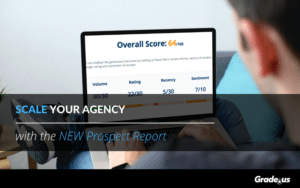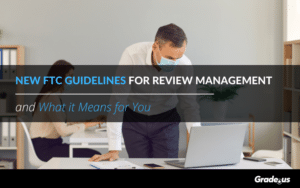Want high-authority links? Nothing beats public relations.
Actually making PR work for you can be challenging. Syed Irfan Ajmal (he goes by Irfan) knows all about the challenges. He had false start after false start.
Then, he had a breakthrough. Today, you’ll find him writing articles and getting cited in publications like Forbes, Entrepreneur, SEM Rush, The Huffington Post, and more. You’ll find his clients there, too, all happily reaping the benefits of highly authoritative backlinks.
He’s got a busy public speaking schedule and he hosts his own podcast, so I felt fortunate to catch up with him. The fact that he’s absolutely charming probably doesn’t hurt as he pursues any of these efforts, but he still had plenty of insights that anyone can use to make the news work for clients, and themselves.
Effective PR strategies for marketers
Raney: What are your best public relations tips for marketers who may be struggling to get coverage for their clients?
Irfan: Use HARO. Provide expert insights to journalists or bloggers. They need expert insights and quotes from people like us, or one of our clients. This approach results in more high-authority mentions, citations, and backlinks from publications like Forbes, Entrepreneur, Reader’s Digest, and a few others.
Speaking strictly from a public relations perspective, if I’m the customer, and I come to Grade.us to see if I would like to use their reputation management service, and I see your service cited on Forbes and TechCrunch, then that’s immediate social proof that keeps me hooked to your webpage.
These are also valuable backlinks, even if these publications aren’t super relevant to your niche. There is a slight disadvantage: it typically results in home page backlinks. When I share my insights about cybersecurity with a publication, for example, they will usually link to the home page, unless I have an in-depth content piece specifically about cybersecurity or whatever the topic is that I can mention as a related resource, which they’ll sometimes link to.
So, if you have the money and time I suggest you guest post, too, even if you only guest post at low-and-medium authority sites. When you guest post, you get links to your internal pages, which are more valuable backlinks.
How you can automate your PR processes
Raney: You’ve developed some strategies for automating your PR campaigns, is that right?
Irfan: That’s right.
We use Ahrefs to find those raw leads. So, for instance, if I see that 200 people have linked to an article, and that article is on the same topic as my topic, and I see that article has been linked by 200 websites, I will find those websites via Ahrefs.
Then, our link prospector will use a combination of manual review and a tool called Hunter.io to find email addresses. Then, he will do a manual review to remove bad or irrelevant sites, or sites we already have a backlink from.
Next, we use Mailchimp and add in our templates there. The template for the first email is for people who have shown some interest. We also have a template for someone who has shown interest then vanished, because we want to ping them again.
One disclaimer: I’ve never been a fan of automated emails. I’m also a recipient of those weird automated emails most of us receive.
What I’m talking about here is quite different. Think about a time when you’ve received an email or a LinkedIn message. Even if it’s a cold prospect, if it’s well-researched, if you see someone has taken that time and they want to ask you about copywriting or reputation management, you probably won’t see that as very intrusive or annoying.
If someone comes to you and asks you about something totally unrelated, that causes all that annoyance.
So, this is why we’re doing the research part. We include the manual review part. We also include a custom tag for every single website, noting something that’s unique about that person or that site. We do this to stand out from the crowd and to make sure our emails don’t come across as intrusive.
The intersection between PR and online reputation management
Raney: There’s an intersection between public relations and ORM. Aside from getting quoted in various publications, what are your top reputation management tips?
Irfan: I feel bad for businesses who receive a single bad review that eclipses all the positive reviews they’ve received. According to statistics a single negative review can decrease revenue by 5% to 8%.
Keeping that in mind, I would say that reputation management is something businesses need to invest in from Day 1, rather than using a reactionary strategy where you start to realize its importance after you’ve received a negative review.
Encourage your customers to leave testimonials as well as reviews. Get them to leave video testimonials.
Account for the fact that not a lot of people are good at writing testimonials.
The other day I hired someone and after the job was done they sent me a nice Google form. They asked: “What problem did you have before you worked with us? What was your experience with us like, would you recommend our service to a friend, and if so, what would you say?”
This made it very easy for me to come up with relevant testimonials for that vendor.
You also, of course, want to make sure you’re invested in customer support, after-sale service, and treating everyone well.
Launching PR campaigns for new versus established brands
Raney: You did a piece on start-up SEO. What’s different about launching a PR campaign for brand new companies vs. established ones?
It’s a mixed bag. There are pros and cons.
It’s easy for a new company to pivot and shift strategies. Small size and agility are a plus. When you’re a large company getting even a very small thing approved takes ages.
Where start-ups struggle is with their budget, and they don’t have a lot of clients or fans. If Apple releases a new phone or something they can be sure they’ll get a lot of sales just by having Tim Cook do a keynote speech.
With a large company, it’s easy to see where the low-hanging fruit is from an SEO perspective. They are already ranking for some keywords. If they are on page 3 or 4 for a handful of keywords with a decent search volume we can build on that. With new companies you need to spend a lot more time on strategy, A/B testing ideas, and creating pieces that can act like linkable assets like infographics, in-depth guides, interactive tools, or quizzes.
Identifying viral topic ideas and executing them
Raney: One of the strategies you suggest is finding and leveraging viral topics. How do you do that?
Irfan: It can take a lot of time, but it’s all about being creative.
For example, 7-11 has a tradition. Every election cycle they stock two colored cups, one red, and one blue. If you think about it, coffee and politics have no relation whatsoever.
Then again, the people who are coming to their shops are voters. They probably support one party or the other, right? Letting them choose one of those cups becomes a story.
In terms of digital content, I’d call your attention to Hootsuite. Social media has nothing to do with Game of Thrones. But when every new episode starts you see an animation with the Jon Snow kingdom coming up, or the North kingdom coming up, or whatever.
Hootsuite created a video around the time Game of Thrones was being released. It’s very similar to the starting few scenes of Game of Thrones. It’s got similar music. The Kingdom of Facebook comes up. The Kingdom of Twitter comes up. That video got 1 million views.
They’re reaping benefits from it even now, because we’re talking about it right now.
One thing that’s very important: make sure the creative team has the freedom to act super fast. Don’t make them wait for someone’s approval. These viral stories get viral very fast, but then they go away very fast as well.
So, the traditional creative process where the client or the management will take several days or weeks to approve an idea won’t work.
You do tell them: act fast, but make sure you’re not being insensitive to the emotions of the public. You don’t want to try to come up with something funny about Black Lives Matter.
Developing thought leadership and mainstream publication placement
Raney: Another part of this process is, of course, thought leadership. You can’t exactly go in and become a thought leader on behalf of your client. How do you help an organization identify and take advantage of a thought leader within their company who may not be publishing yet, or who may not even realize the capacity is there?
Irfan: If we want to help them get published we can do that on their behalf. A lot of those leaders don’t have the time to sit down and write a piece. A lot of them have imposter syndrome, too.
So we ask them to share their ideas or insights about the particular topic as a series of bullet points. Or, if they prefer, at the gym. Just hit the record button on their phone. Record some ideas and insights.
Then we go back and create something which is ghostwritten. They approve that, we get it published.
Sometimes it’s better just to talk to them. Podcasts are very good right now, and they’re going to get much bigger because voice search is exploding. Many of these podcasts are looking for amazing guests to put on their show. Get them on the show. If they have just a few minutes, try recording some YouTube videos.
Later you can repurpose any of this content.
Raney: Finally, how would an agency owner or consultant get themselves published in Forbes, Entrepreneur, and other big publications like you’ve done?
Irfan: Most of these publications have a submission form. In 2013 I’d added my details into a form for Business.com. I forgot about it.
Three or four months later they say I’m a writer, and now I have to write four articles a month for six months. I was not very happy writing so much for free, but I did that because I could see it would benefit me, right?
From there, I sent a piece to The Huffington Post.
With Forbes, I just called them and chased them on social media until they said yes. It’s just about being yourself, sending persuasive, well-researched pitches, and following up. Always follow up. A lot of these people are very busy, and are getting bombarded with all kinds of messages, so don’t assume “no answer” means “no.”
Want to hear more of what Irfan has to say? Follow him on Twitter at @syedirfanajmal.










